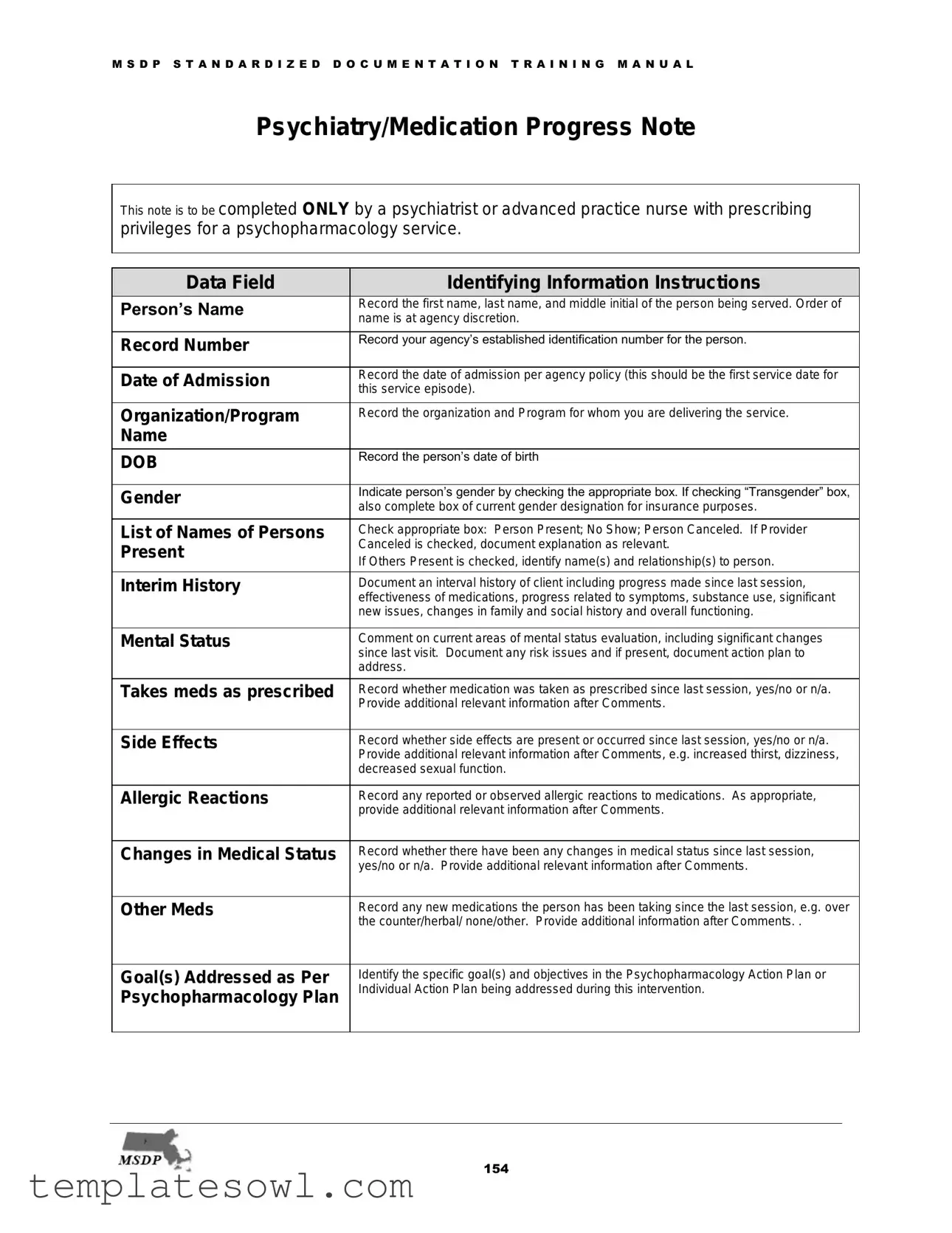What is the purpose of the Psychiatric Progress Note form?
The Psychiatric Progress Note form is a structured way for healthcare providers to document important information about a patient's mental health treatment. It is specifically designed for use by psychiatrists or advanced practice nurses with prescribing rights for psychopharmacology services. This note helps ensure continuity of care, tracks medication effectiveness, and captures any changes in the patient's condition.
Who is qualified to complete the Psychiatric Progress Note?
This form should be completed only by licensed psychiatrists or advanced practice nurses who have prescribing privileges for psychopharmacology. The responsibility lies with these professionals to maintain accurate and comprehensive records for each patient interaction.
What information is required in the Identifying Information section?
In this section, you need to enter the patient's name, record number, date of admission, organization/program, date of birth, and gender. It's also important to indicate whether the patient was present, canceled, or a no-show during the visit.
How should interim history be documented?
The interim history section should detail the patient’s progress since the last session. Include information about medication effectiveness, any changes in symptoms, substance use, new issues, and improvements or declines in the patient's overall functioning.
What should be included in the Medication Orders section?
In this section, document any new medications prescribed, specifying if they are renewed, changed, or discontinued. Include details like the name, dosage, frequency, quantity, and the number of refills. Additionally, confirm that informed consent was given by the patient, indicating they understand the risks and benefits associated with each medication.
What is the role of the Goal(s) Addressed section?
This section identifies the specific treatment goals from the Psychopharmacology Action Plan that are being targeted during the session. It's crucial for tracking the effectiveness of the treatment plan and ensuring that the patient's needs are being met continuously.
Why is documenting the Response to Intervention important?
Documenting the patient's response to interventions helps provider teams assess the effectiveness of treatment strategies. It also guides future care plans. If a patient shows no progress, the note should reflect adjustments in strategies to foster improvement.
What should be done if a patient's diagnosis changes?
If there has been a change in the patient's diagnosis, it is essential to document this in the relevant section and complete a Comprehensive Assessment Update form. This step ensures that all parties involved in the patient's care are aware of the change and can adjust treatment accordingly.


